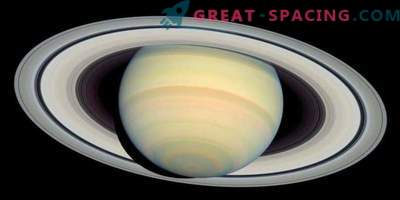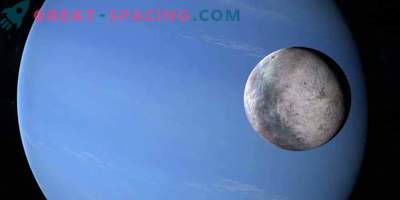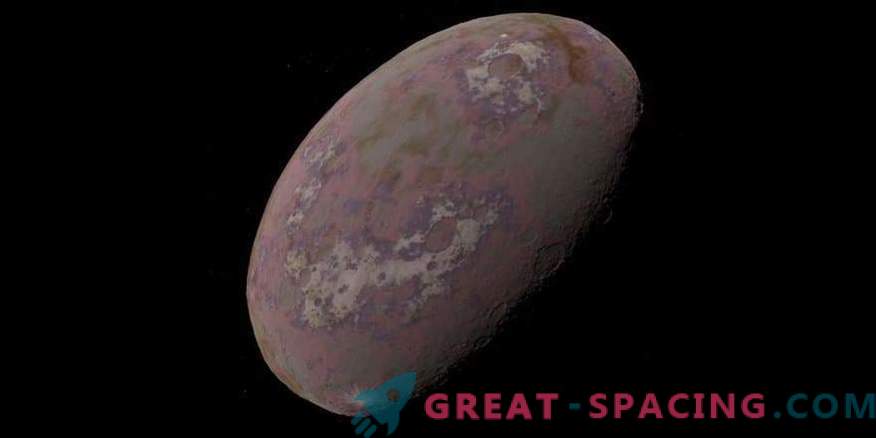
Behind the orbit of Neptune an interesting object of the Solar System is spinning, which also managed to become a champion in rotation speed. Meet the dwarf planet Haumea.
Trans-Neptune Object
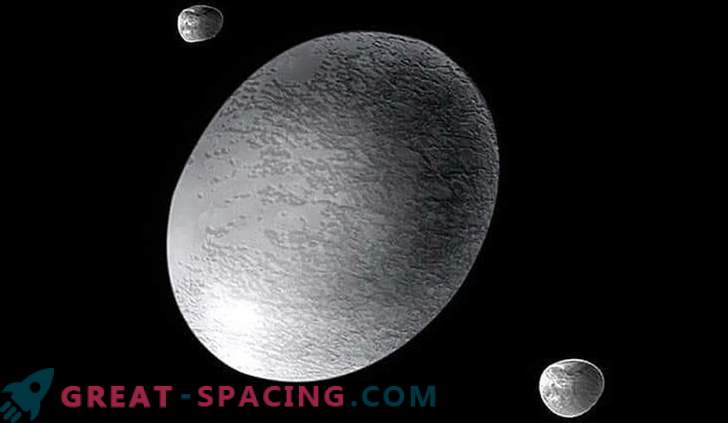
Artistic vision of Haumea and her companions Hiyaka and Namaka
Haumea refers not only to the category of dwarf planets, but also among the Trans-Neptunian objects. This includes all the celestial bodies of our system, which rotate around the main star at a distance greater than Neptune’s orbital path (more than 30 a. E.).
Haumea is able to move away from the Sun in its orbital path by 35-51 a. e., which means that the object does not intersect part of the inner orbit of Neptune. For the first time the dwarf planet was noticed in the pictures in 2004. This find belongs to Michael Brown’s group (“Pluto Killer: how one person changed the perception of the Solar System”).
However, Brown did not immediately announce the discovery and spent a lot of time on additional research. Therefore, the first official statements came from Spanish astronomers in 2005, who were recognized as pioneers. The name was given in honor of the Hawaiian goddess, responsible for childbearing and fertility.
Rotation and shape

Comparison of the size of Haumea with other large trans-Neptunian objects and the Earth
This dwarf planet ranks first in rotational speed among all large objects, whose diameter exceeds 100 km. The object is unusual, as it only takes 3.9 hours to rotate around the axis.
Scientists can not understand why this is happening, but the rotational speed has affected the form. Haumea failed to achieve sphericity, and it is rather elongated. Moreover, it was precisely because of the form that they were ready to be excluded from the group of dwarf planets.
Interestingly, the rotation indicators allowed us to determine the density of the object (different materials stretch differently). Now it is believed that Haumea is almost completely represented by a stone covered with a small layer of ice. The elongated shape also affects fluctuations in luminance values (or it’s all a matter of surface irregularities).
There are rings!
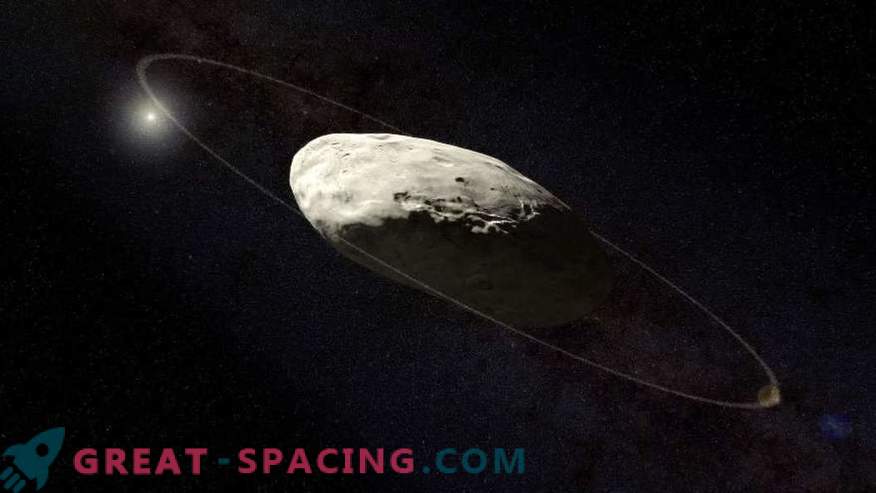
Haumea Rings Through the Eyes of the Artist
Yes, Haumea boasts the presence of rings, which were first seen in January 2017. With a width of 70 km, they are drawn to almost 2,300 km. Transparency level - 0.5. Here, too, a record was set, because before us is the first trans-Neptunian object with a ring system. Of course, there is no point in having Saturn, but the very presence of rings is fascinating. Rings could arise from the remaining material after the collision. It is believed that the dwarf planet appeared after the impact of two large trans-Neptunian objects. As a result, a dwarf planet was formed, and the material around it created rings. Some fragments can still travel around the solar system (at least, scientists are still looking for them).
Two satellites

Image 2003 EL61 Haumea with Hiiak and Namak
Haumea is not going to rotate in complete solitude, so that two satellites can be immediately detected near it. They were noticed in January and June 2005. The names were given in honor of the daughters of the Hawaiian goddess: Hiiak (350 km in diameter) and Namaka (half as much). Rotate around the planet in 48.9 and 18 days. It is believed that these moons also appeared after the collision of two trans-Neptunian objects.
Postscript
You can watch Haumea on your own. For this you need a good telescope and a clear night sky. Interestingly, the surface is covered with crystal ice, against which a dark red spot, found in 2009, stands out. It is believed that there is an increased concentration of minerals and compounds rich in carbon.



